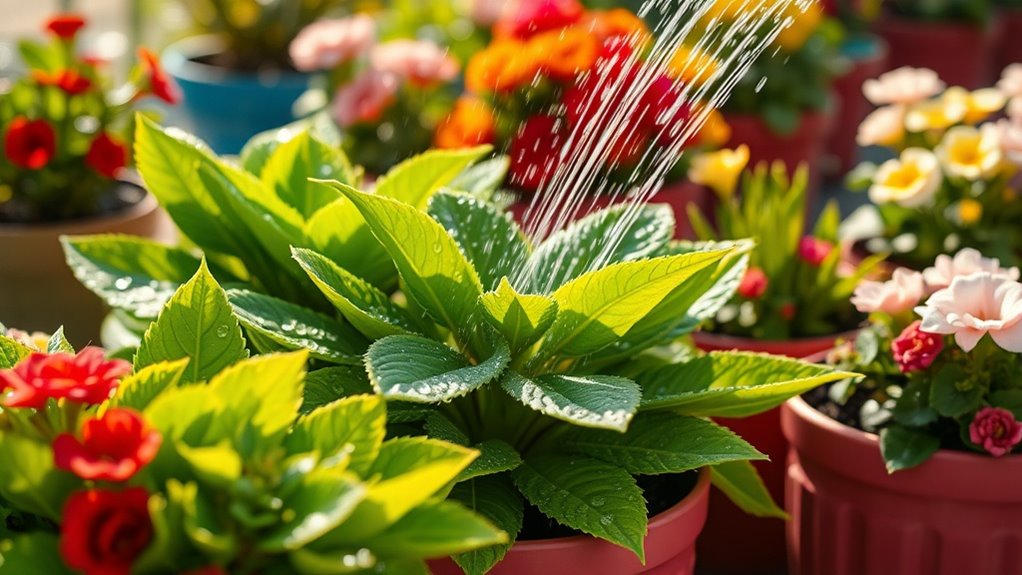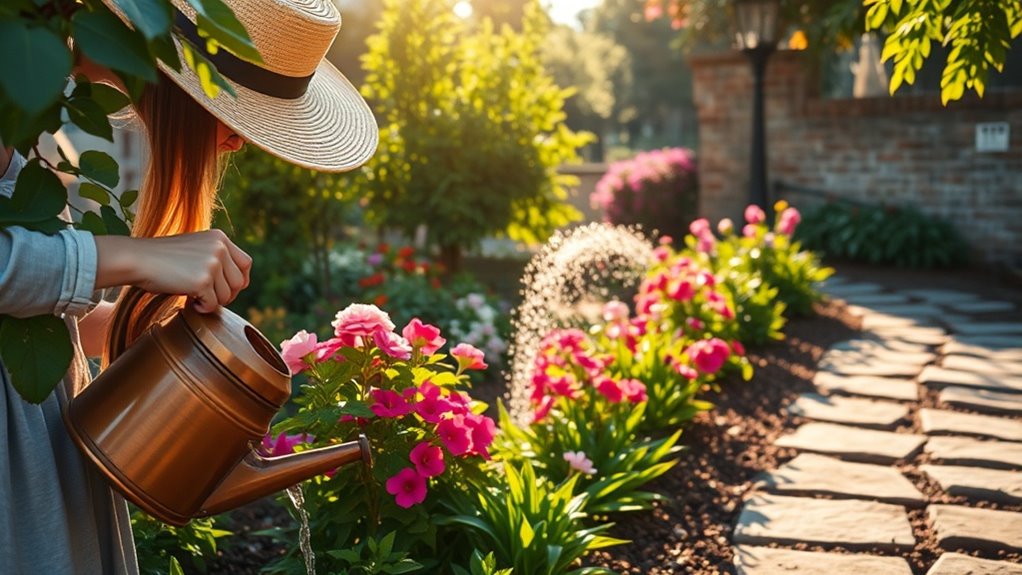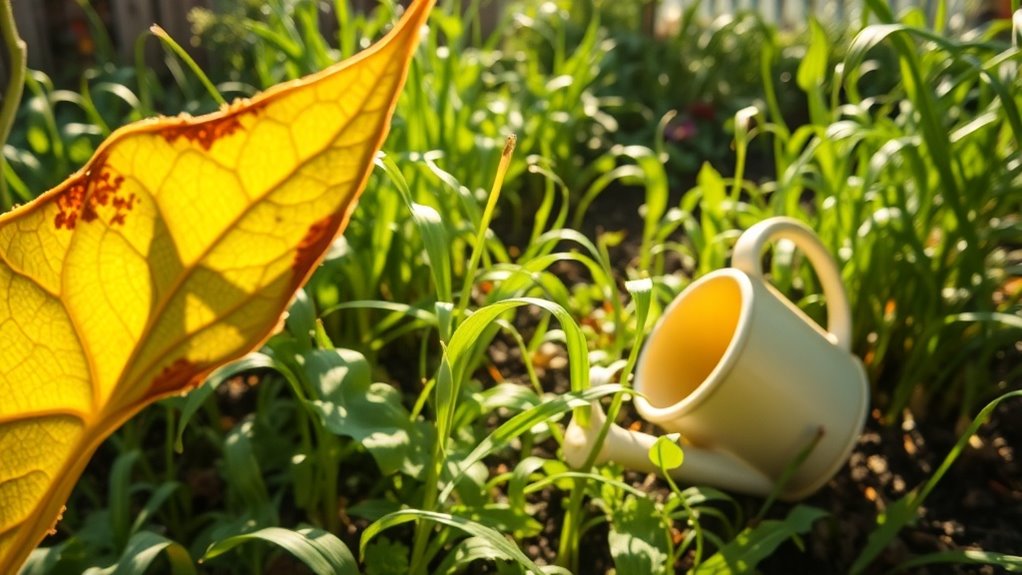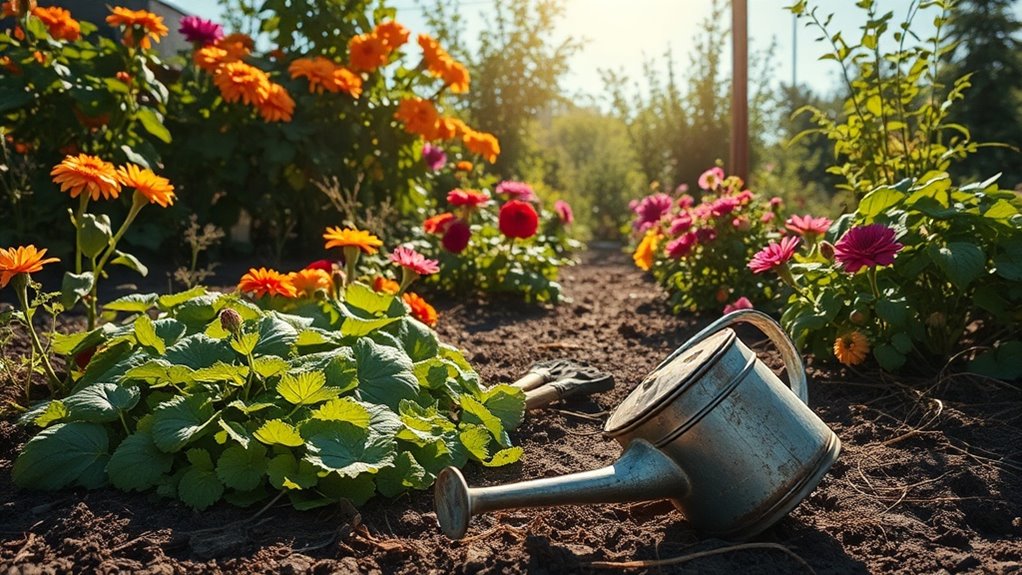Seasonal Watering Tips That Keep Plants Thriving
Think of your plants as a garden orchestra; each season brings a new conductor and a distinct rhythm. Your watering strategy needs to adapt to these changing seasons for optimal growth. In spring, it’s about nourishing roots; summer calls for careful timing. As fall approaches, preparation for dormancy is key, while winter poses unique challenges. Are you ready to refine your approach and ensure your plants thrive throughout the year?
Understanding Plant Watering Needs by Season
While the changing seasons affect many aspects of gardening, one of the most critical changes occurs in how you need to water your plants.
Adjust your seasonal watering schedule to match temperature and humidity variations. During warmer months, increase frequency, while cooler months require less water.
Pay attention to your plants’ specific needs, ensuring they thrive throughout each season. Additionally, consider implementing seasonal watering strategies that help minimize water usage without sacrificing plant health.
Spring Watering Strategies for New Growth
As temperatures begin to rise and plants awaken from their winter dormancy, it’s essential to adopt effective watering strategies to support new growth.
Water deeply and less frequently to encourage root development. Early mornings or late afternoons are ideal for watering, reducing evaporation.
Keep an eye on moisture levels, and ensure new seedlings receive consistent moisture without waterlogging to foster healthy growth. Additionally, consider the impact of ideal watering schedules on maximizing plant health and resilience.
Summer Watering Techniques for Hot Weather
When the scorching heat of summer settles in, adjusting your watering techniques becomes crucial for keeping your plants healthy and thriving.
Consider these practical tips:
-
Water early in the morning or late in the evening to reduce evaporation.
-
Use mulch to retain soil moisture.
-
Deep water your plants to promote root growth.
-
Check soil moisture regularly.
-
Group plants with similar water needs together.
Fall Watering Practices for Preparing for Dormancy
As temperatures begin to cool and days shorten, adjusting your watering practices becomes essential for preparing your plants for dormancy.
Reduce watering frequency, ensuring the soil remains moist but not waterlogged. Focus on deep watering to encourage strong root systems.
Pay attention to your specific plants’ needs, as some may require less water than others during this transitional period. It’s crucial to remember that overwatering plants can lead to root rot and other health issues if not managed properly.
Winter Watering Tips to Protect Against Frost
To protect your plants from frost during winter, it’s crucial to adjust your watering strategy.
Here are some tips to keep your plants safe:
- Water in the morning to allow moisture to soak in.
- Use warm water to prevent shock.
- Don’t overwater, as soggy roots can freeze.
- Mulch around plants to retain warmth.
- Check soil moisture regularly to avoid dryness.
Adapting Your Watering Schedule for Indoor Plants
While indoor plants can thrive year-round, adapting your watering schedule is essential to meet their changing needs, especially during seasonal shifts.
In winter, reduce watering as plants enter dormancy; in spring and summer, increase frequency as growth accelerates.
Always check soil moisture before watering. Adjust based on humidity and temperature, ensuring your plants stay healthy and hydrated throughout the year. Additionally, watering early in the morning or late afternoon can help optimize plant health by reducing evaporation and allowing for better nutrient absorption.





